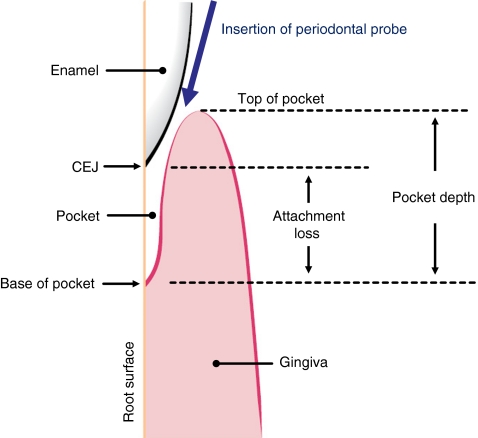Fig. 1.
Diagram of periodontal pocket in a patient with periodontitis. The pocket is the space between the root surface and the gingiva. In healthy gums, the base of the pocket is coincident with the cemento-enamel junction (CEJ, the boundary between the enamel crown and the root) and there is no attachment loss. In periodontitis, the base of the pocket migrates apically (i.e. away from the enamel crown towards the root tip), thereby creating a pocket. The base of the pocket is therefore apical to the CEJ, and attachment loss can be measured (in mm, using a periodontal probe) from the CEJ to the base of the pocket. Pocket depth (also called probing depth) is measured in mm from the top of the pocket (i.e. from the gingival margin) to the base of the pocket. In this example, the pocket depth might be 6 mm, with 4 mm loss of attachment (as indicated in this example, pocket depth is usually greater than attachment loss due to the inflammation-induced swelling of the gingiva). The direction of insertion of a periodontal probe is indicated

